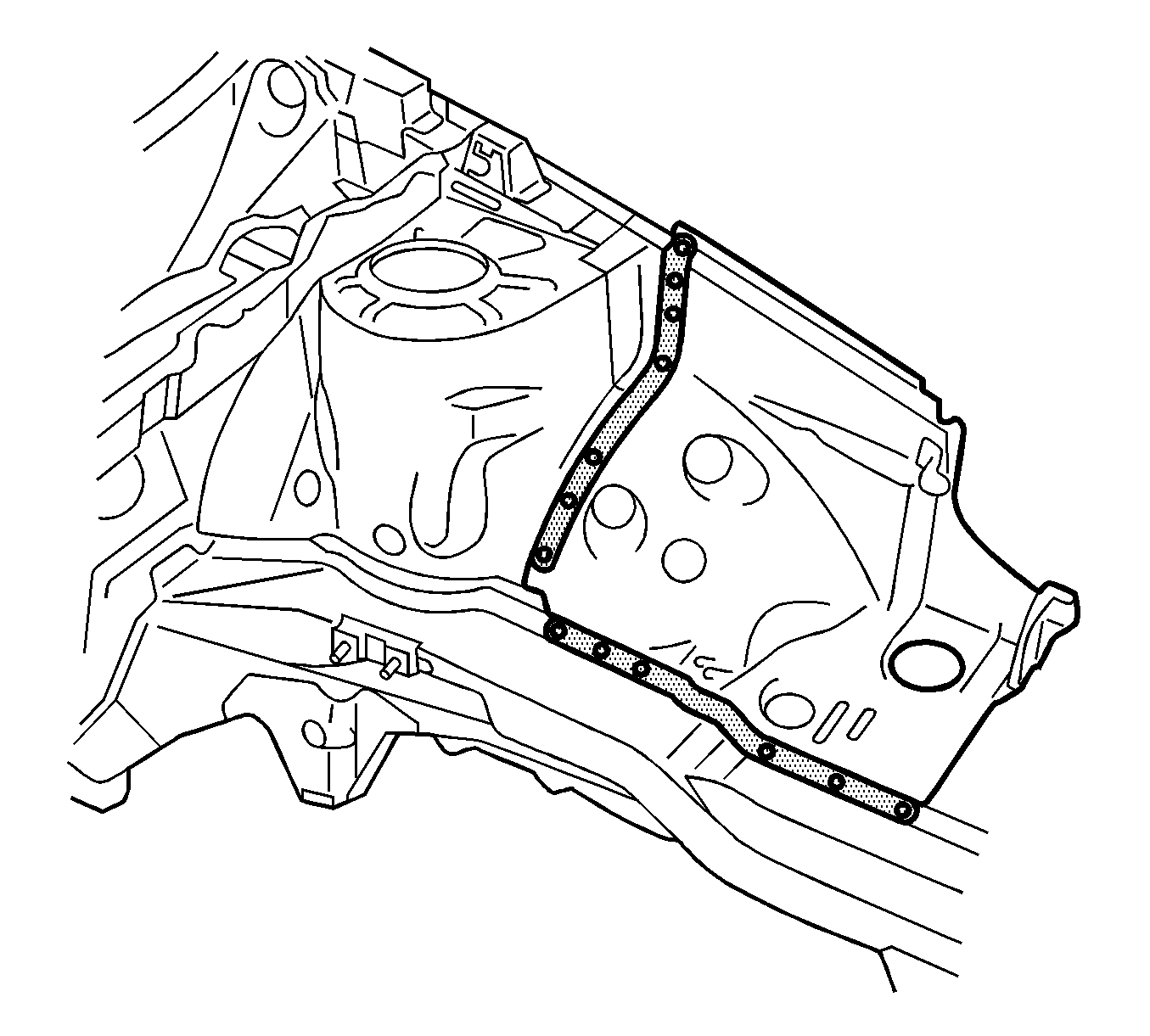Removal Procedure
| • | When replacing a wheelhouse section, carefully position the service assembly using 3-dimensional measuring equipment to properly locate the wheelhouse. |
| • | Do not replace the entire wheelhouse when damage is limited to the front portion of the wheelhouse assemblies. In such a situation, the technician can section the wheelhouse. |
| • | Inspect for damage where the wheelhouse is attached to the cowl panel. If the panels have been separated, it will be necessary to repair the cowl panel and replace the wheelhouse. If the panels have not been separated and there is no damage in this
location, the wheelhouse can be sectioned. |
- Remove panels and components, as necessary, for access.
- Remove the upper tie bar. Refer to
Upper Tie Bar Replacement .
- Restore as much of the damage as possible to factory specifications.
- Remove all the sealers and anti-corrosion materials as necessary.

- Locate, mark, and drill out the factory welds attaching the wheelhouse section panel.
- Remove the damaged section of the wheelhouse.
Installation Procedure

- Drill an 8-mm (5/16-in) hole every 35 mm (1-3/8 in) along the overlap on the new wheelhouse section.
- Prepare all mating surfaces for welding as necessary.
- Apply 3M Weld-Thru Coating P/N 05916, or equivalent, to all mating surfaces.
- Position the new wheelhouse section and check the fit.
- Plug weld wheelhouse section panel as necessary.
- Install the upper tie bar. Refer to
Upper Tie Bar Replacement .
- Clean and prepare all bare metal surfaces.
Important: Prior to refinishing, refer to publication GM 4901M-D-01 GM Approved Refinish Materials for recommended products. Do not combine paint systems. Refer to paint manufacturer's recommendations.
- Apply the following as necessary:
| • | Sealers and anti-corrosion materials |
| • | Two-part catalyzed primer |
- Install all related panels and components removed for access.


